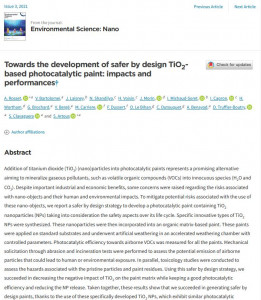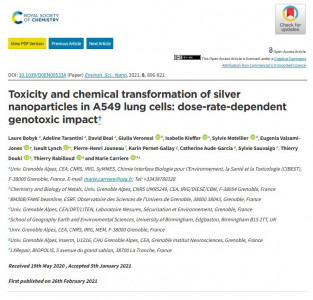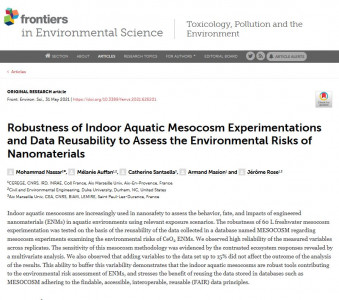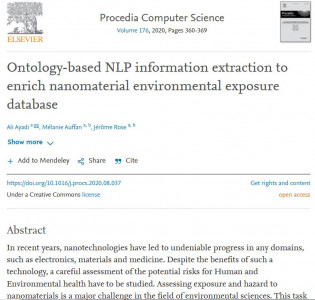Goldschmidt is the foremost annual, international conference on geochemistry and related subjects, organised by the European Association of Geochemistry and the Geochemical Society.

This conference will be divided into 12 themes. Among these, you can find these 3 ones. The deadline for abstract submission is March 29th 2019.
The session below is a special one, honoring Professor Georges Calas (Sorbonne Université, Paris) for his lifetime contributions in geochemistry and mineralogy. It will be part of Theme 4 (Nano to Microscale Processes).
4l - Session honoring Prof. Georges Calas for lifetime contributions in geochemistry and mineralogy.
- Keynote Speakers: Professor Liane G. Benning (German Research Center for Geosciences, GFZ) and Prof. Michael F. Hochella, Jr. (Virginia Tech and Pacific Northwest National Laboratory)
Dr. Georges Calas, Professor, Sorbonne Université, Paris, France and Chair of Mineralogy, University Institute of France. Prof. Calas has made major scientific contributions over the past 4.5 decades in geochemistry, mineralogy, and materials physics, with a focus in the following areas: (1) molecular-scale approaches to the environmental geochemistry and mineralogy of heavy metal contaminants, (2) structure/property relationships of transition elements in silicate minerals, glasses, and melts, (3) nuclear waste glasses and radiation damage in glasses and minerals, and (4) structure/property relationships of industrial materials. Most recently, Prof. Calas' research has extended to mineral resources and their sustainable development. He has been a pioneer in the applications of solid state spectroscopy in these scientific areas, particularly the application of synchrotron x-ray methods to molecular-level problems in geochemistry, mineralogy, and materials sciences. We encourage submission of abstracts in any of these focus areas.
12b - Exploring the functioning of soil-plant interactions: data and models
- Convenors: Frédéric Gérard (INRA), K Ulrich Mayer (UBC), Chiara Pistocchi (SupAgro), Federica Tamburini (ETH)
- Keynote speaker: Sascha Oswald (Univ Potsdam)
Soil-plant interactions are at the centre of many economical and environmental issues related to climate change, erosion, weathering, water resources, crop productivity and biofuel production. Soil-plant interactions are not restricted to the root zone, but also affect the top soil by litter fall and decomposition. Soil-plant interactions involve a complex interplay between hydrological, geochemical, physical and biological processes, including the cycling of carbon, nutrients, metals, and gas exchange with the atmosphere. This session aims at gathering contributions that explore the functioning of soil-plant interactions through laboratory experiments, field studies and numerical modelling with a particular focus on the role of biogeochemical processes, possibly, but not necessarily, coupled with mass transport. Contributions across all scales ranging from the pore scale, rhizosphere, single root, plant scale to the landscape scale are welcome. We will consider contributions on experimental methods, measurement and imaging techniques, as well as modelling approaches. Specific topics include, but are not limited to biotic and abiotic controls on nutrient uptake, soil carbon storage, genotype-phenotype mapping under environmental stress, plant manipulation of soil microbiome, salinity impacts, and the role of plant-soil interactions on mineral weathering and carbon availability. This session is meant to promote exchange between disciplines in this highly interdisciplinary field.
13b: Reactivity of Contaminants and Pollutants at Interfaces between Minerals, Water, Ice or Vapor
- Conveners: Grégory Lefèvre, Jean-François Boily
- Keynote: Angelos Michaelides (University College London)
Numerous studies have focused on the behavior of contaminants and pollutants at mineral/water interfaces. Although the liquid phase is the most ubiquitous state of water in nature, dynamic interfaces between minerals and ice or vapor also play key roles in the cryosphere and the atmosphere. Coupling mineral surface chemistry with the formation mechanisms and structuration of ice films is especially needed to tackle the pollutants behavior in Arctic ecosystems, the reactivity of ice crystals in clouds, or ice formation in outer-space, and especially planet Mars. Additionally, water condensation and evaporation reactions are of particular importance for tracking the fate of contaminants and mineralogical changes undergone in soils affected by hydration–dehydration as well as freeze-thaw cycles. The aim of this session is to provide the community with a forum to discuss and compare new phenomena at mineral/water, mineral/ice and mineral/water vapor interfaces. We especially welcome contributions with new experiments and simulations on the properties of these unique interfacial solvation environments, and mechanisms through which they control pollutant and contaminant uptake release and transformation during phase transformation of water.
13g: Engineered Nanoparticles in the Critical Zone: From Field to Detection to Model
- Conveners: Yann Sivry, Gaëtane Lespes
- Keynote: Vera Slaveykova
Nanoparticles (ENPs) that are widely used in different industrial fields and the risk they pose for release to the environment has increased as never before. ENPs are expected to pass the waste-water-river-topsoil-groundwater pathway and, given their size, can interact with living organisms by crossing cell membranes. Metallic and metal oxide ENPs are of specific concern as they are composed of toxic elements that could potentially impact ecosystems. ENPs released in soils can be transported by advection and diffusion, and their reactivity will depend on the presence of organic ligands (i.e. humic substances) that can stabilize the particles, the existence of bacteria that can complex, take them up or break them down, and the abundance of sorption sites available on natural mineral surfaces. The measurement and characterization of ENPs has been revolutionized over the past decade and we now have tools at our disposal to fully characterize these materials (size, shape, number concentration, aggregation state, surface properties, etc.), often at environmentally relevant concentrations and in difficult biological and environmental matrices. In-depth understanding of the fate and transport of ENPs guides scientific communities and regulatory agencies to formulate legislative regulation and management schemes. The scope of this session is to gather researchers, scientists, experts and specialists from nanoparticle and colloid science, soil and environmental chemistry, ecotoxicology or neighbouring disciplines to discuss the latest results and findings in the field of release, aging, fate, transport and toxicological effects of nanoparticles in the environment. Contributions can address the following topics : i) stability reactivity, transformation and speciation ; ii) biological impact and interaction ; iii) transport in porous and aquatic media ; iv) analytics and metrology ; v) models ; vi) mesocosm and field experiments.









